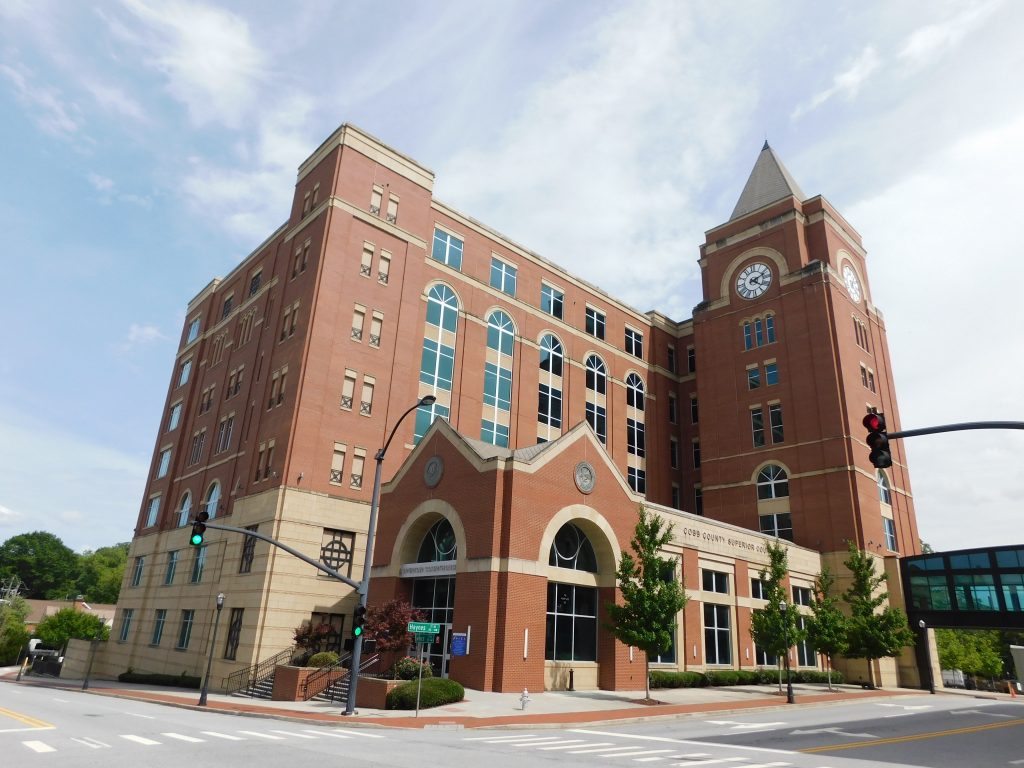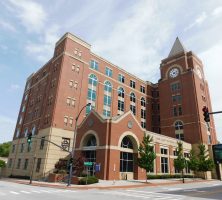Cobb was one of nine northwest Georgia counties carved out of Cherokee Indian country in 1832 and today is part of the booming Atlanta metropolitan area.
It was named in memory of U.S. senator Thomas W. Cobb of Greensboro. The county seat, Marietta, was chartered in 1834. Located in the upper Piedmont, Cobb County never had many large landholdings, developing instead around small subsistence farms. The greatest wealth was in the towns. Before 1932 the thriving industrial center of Roswell was part of the county. In the antebellum era Marietta became a popular resort community. Near the Western and Atlantic Railroad, a sanitarium and several hotels catered to summer visitors seeking a cooler, healthier climate than that of the Georgia and South Carolina coast.
During the Civil War (1861-65), a locomotive chase known as Andrews Raid began in 1862 at Big Shanty (later Kennesaw), and in 1864 General William T. Sherman led an invading Union army through the county as part of the Atlanta campaign. The last mountain range north of Atlanta was in Cobb County. At the Battle of Kennesaw Mountain (June 27, 1864), the Union assault failed to dislodge Confederate forces from their entrenched positions. Nonetheless, a part of the Union force outflanked the Confederates, forcing them to abandon the mountain, as they struggled to stay between Sherman and Atlanta. Union forces occupied Marietta on July 3, 1864. Today the county’s role in the war is commemorated in Kennesaw at the Southern Museum of Civil War and Locomotive History, which houses the locomotive General used during Andrews Raid.

After the war Cobb County, for the next three-quarters of a century, suffered the same afflictions that plagued most of Georgia: a depressed farm economy, low-wage industries, and one-party politics built on white supremacy. In 1915 the county gained infamy for the lynching of an Atlanta Jewish businessman, Leo Frank, allegedly the murderer of thirteen-year-old Mary Phagan, formerly of Cobb County.
The county’s economic transformation began in 1942, when Bell Aircraft announced the opening of a Marietta branch to produce B-29 bombers. By 1945 the large government-built assembly plant provided employment for more than 28,000 workers. After World War II (1941-45), Bell Bomber closed. In 1951, during the Korean War (1950-53), the air force awarded the facility to the Lockheed Corporation. Lockheed-Georgia became the nation’s leading producer of transport planes, from the workhorse C-130 Hercules (first production model rollout in 1955) to the giant C-5 Galaxy (rollout in 1968).

According to the 2020 U.S. census, Cobb County’s population is 766,149, a significant increase from the 2010 population of 688,078. The county is home to prominent businesses and corporations, including The Home Depot and Lockheed Martin. Growth in population and wealth contributed to the county’s expanding political power. In the 1990s Cobb was the home base for Newt Gingrich, the first Republican Speaker of the U.S. House of Representatives in forty years, and Roy Barnes, Georgia’s governor from 1999 to 2003. In 2017 the Atlanta Braves moved to SunTrust Park, a new stadium in Cobb County that anchors a larger entertainment district called The Battery Atlanta. In 2020 the stadium was renamed Truist Park, following the bank’s merger with BB&T.
As newcomers flocked to the county, the population gradually became more diverse. By 1990, for the first time, less than half of Cobb’s residents were natives of Georgia. Between 1980 and 2000 the proportion of African Americans rose from 4.5 percent to 18.8 percent, as a generally affluent Black population joined the migration to the suburbs of Atlanta. By 2003 the county’s diversity extended to top leadership positions. An African American, Lee Rhyant, was general manager of the county’s largest industrial employer, Lockheed Martin. The supervisor of Cobb’s 4,600 county employees, David Hankerson, became Georgia’s first African American county manager in 1993. Betty L. Siegel, appointed president of Kennesaw State University in 1981, was the first woman ever to head a unit of the University System of Georgia. With Lisa A. Rossbacher’s selection as president of Southern Polytechnic State University in 1998, women headed both of the county’s public universities until Siegel’s retirement in 2006. (The two universities later merged in January 2015.) And in 2002 Sam Olens became the first Jew elected to chair the Cobb County Commission. Indicative of the county’s transformation, none of these firsts excited much public or media attention.








